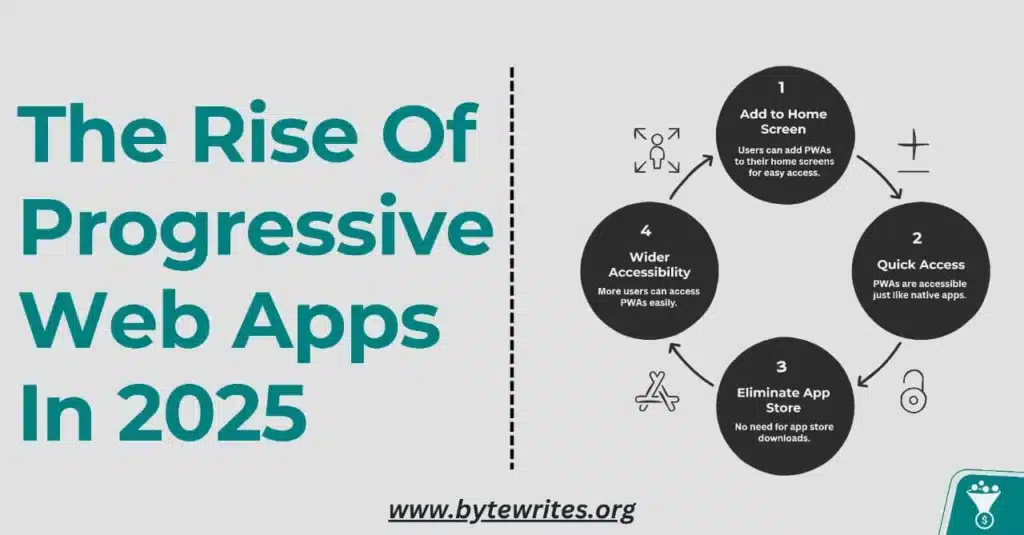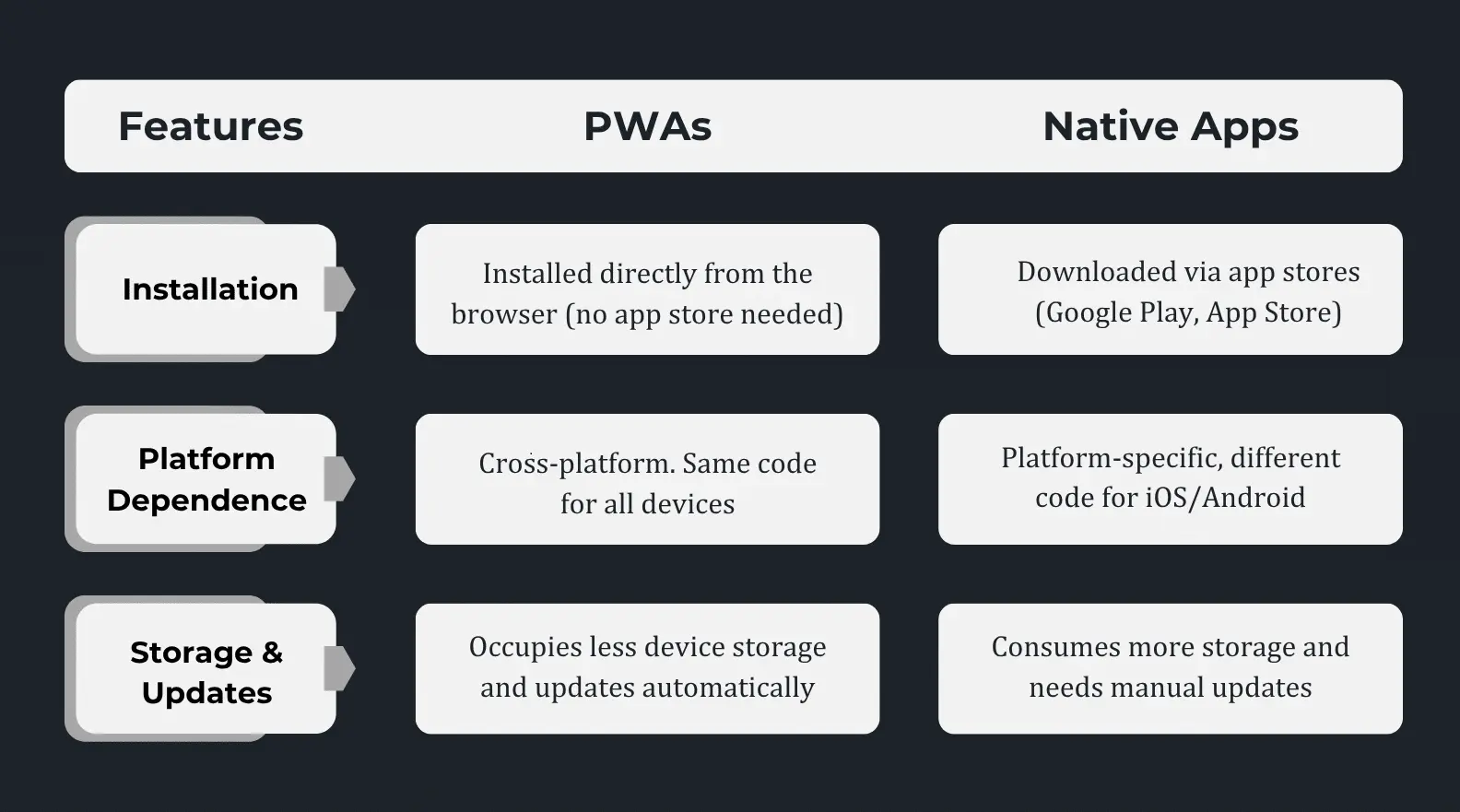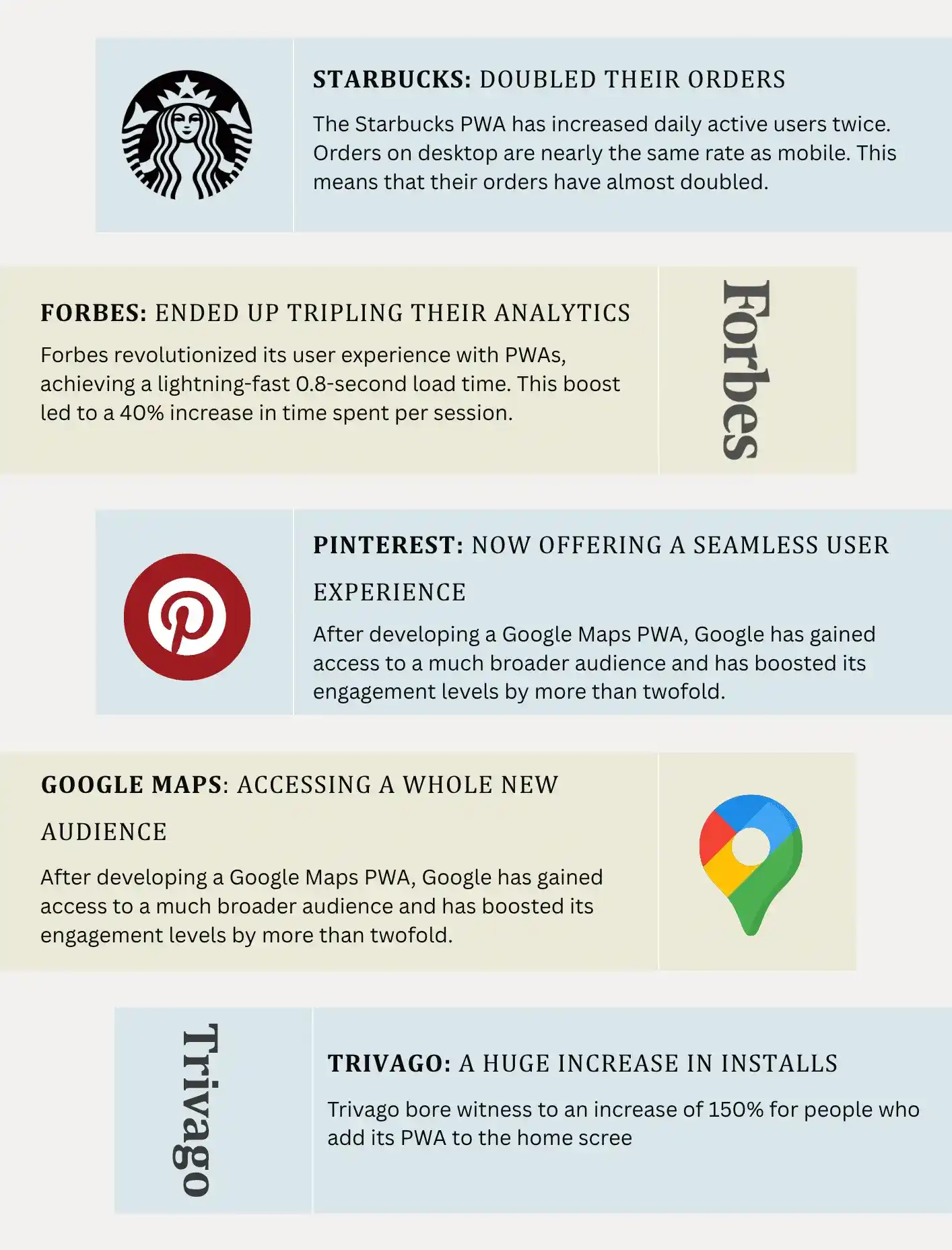
In 2025, progressive web apps (PWAs) are bringing about big changes in the limits and positive impacts of how businesses connect with their online audience.
According to Statista, the majority of mobile apps are expected to generate over $613 billion in revenue this year. And there’s a strong surge of businesses migrating towards faster, lighter, and somewhat custom web development solutions. That’s where PWAs come into play.
If you’re considering growing your business by enhancing your users’ experience, you should consider investing in custom web development services. Frankly speaking, they have never been more useful.
With that said, if you’re thinking about “Why or how are they useful for businesses like mine?” or “How do they positively affect such businesses?” You’re on the right track. Let’s explore why companies are transitioning to PWAs in 2025 and how they align with modern web strategies and user experiences.
Getting Started With Progressive Web Apps (PWAs)?
Progressive Web Apps combine the positives of websites and mobile apps. They’re built using web technologies like HTML, CSS, and JavaScript, but give the feel of native applications.
This means that users can access them offline, experience super-fast loading speeds, and install PWAs on their devices (the process is simpler than installing day-to-day apps on their phones).
PWAs are the latest change in web application development services. Unlike traditional websites, they offer features such as push notifications, background sync, and app-like navigation, all without requiring a visit to an app store.
When we compare web app development services to PWAs, it becomes crystal clear that PWAs are a huge leap forward. They use fast and secure browser APIs and user-friendly designs to deliver smooth experiences. It results in driving a positive impact on today’s custom web development services, making their clients happy.
Difference between PWAs and Native Apps:

Why Businesses Are Switching in 2025
More businesses are choosing PWAs in 2025 for one sole reason: a huge leap in performance. For instance, Clipchamp’s video editor PWA installs see a 97% monthly growth. These are the upgrades that built their success from the ground up.

Fundamental pillars of growth powered by PWAs
- Speed: PWAs load in under a second, reducing bounce rates and increasing engagement.
- Offline Capability: Thanks to service workers, users can browse even when offline.
- Installability: No need for Google Play or App Store. Just tap “Add to Home Screen” while the website is open, and you’ll spot it in your device’s home screen.
According to Gartner’s latest trends, 60% of businesses utilizing new digital interfaces and adhering to newer advancements are expected to adopt PWAs by the end of 2025. This shift is happening due to AI web development strategies that are designed to be power-dynamic, and give personalized experiences while keeping app size minimal.
PWAs are taking over the previous and outdated era of engagement. Look at Rakuten 24’s huge success, made possible by utilizing PWAs. To be precise, Rakuten 24’s investment in PWA increased user retention by 450%
As AI and machine learning are setting a new norm in custom web development solutions, businesses are getting ready to foster better results through smarter PWAs.
Benefits of Progressive Web Apps
Progressive Web Apps offer a dynamic range of pros that make them a top choice for businesses. Here’s why PWAs are being adopted by more and more businesses’ websites in 2025:
- They load instantly, even on slower connections, providing users with a seamless experience without frustration.
- Thanks to offline capabilities, users can access content anytime, anywhere.
- PWAs are designed mobile-first, require no app store downloads, and offer smooth, app-like navigation.
- Features like push notifications help re-target and re-engage previous visitors, while the fast performance reduces bounce rates.
- Overall, this leads to a way higher engagement rate than before and ultimately boosts conversion rates, making PWAs a powerful tool.
Altogether, with the help of progressive web app development services, these features translate to better retention rates, high engagement, and a bigger & better ROI. They also align with web development-based marketing strategies, which turn casual visitors into recurring customers.
How PWAs Fit into Custom Web Development Solutions?
PWAs are no longer a bonus tool you can use to engage more users or re-engage existing ones; they’ve now paved their way to being one of the core components of custom web development solutions in 2025.
This means that, whether you’re running a retail store, a booking platform, or an educational tool, high-performing PWAs offer unmatched flexibility and performance for your users.
If you want to see your vision come to life through tangible results, you’ll be happy to know what bytewrites is bringing to the table.
Bytewrites’ custom web development solutions are designed to:
- Build high-performing PWAs tailored to your business goals
- Integrate AI-powered personalization to improve engagement
- Ensure mobile-first, responsive designs that users love
- Seamlessly set up your PWA
The Bytewrites Experience
The Bytewrites team doesn’t just deliver websites; we design profitable, secure, and responsive digital experiences. Businesses that integrate PWAs through custom web development services are reporting 2x more engagement and 3x better retention.
What to Expect After Integrating PWAs: Success Stories

Conclusion
PWAs represent the next big update in digital experiences. They’re fast, installable, offline-ready, and future-proof. As more and more businesses shift away from confusing mobile apps and slow websites, PWAs offer a smarter and more conversion-focused solution to this problem.
If you want to see your business skyrocket just like the ones above, then explore our custom web development services and take your business to the next level with modern, high-performance PWAs.
Moreover, get a free digital marketing consultation to get started with your own high-performance PWA.
Want to dig deeper and see how AI is transforming more than just web app development? Read our latest blog on the rise of AI-driven content in seo copywriting services and discover how Bytewrites delivers the edge.
FAQ
What are custom web development services, and how do they support PWAs?
Custom web development services are services for building websites and apps dedicated to a business’s goals. They include UI/UX design, front-end and back-end development, and other tech-related works. PWAs are mostly included in these services, as they also require coding, design, and optimization strategies.How is a Progressive Web App different from a traditional web application?
Traditional web applications are mostly in dire need of full reloads and lack the capability of being accessed offline, or their installability isn’t that user-friendly.How do AI web development strategies improve PWA performance and engagement?
AI web development strategies help in the personalization of content in real time; they predict user actions and automate most interactions. When used in PWAs, they make the user experience more creative, which drives better engagement and higher retention, which is what gives a boost to these businesses’ conversion rates.Can PWAs help generate more leads through smart web development strategies?
The simple answer is, yes, they can. With faster load times, better design, and push notifications, PWAs increase session durations and decrease bounce rates. Combined with web development and lead marketing strategies, they’re simply better at converting visitors into leads.